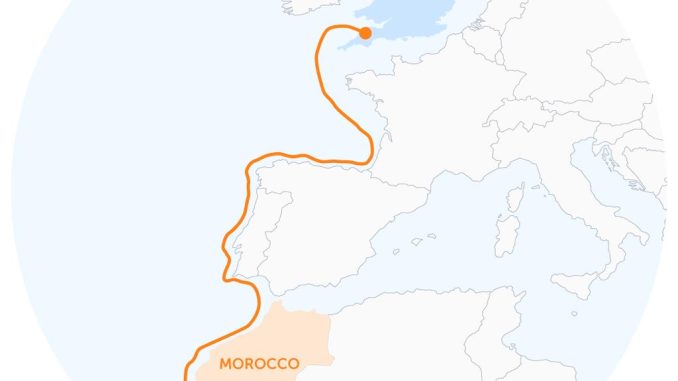
British Government Supports Xlinks’ Project to Supply Solar Power to the UK
With the aim to provide renewable energy to seven million British households, the British government has praised the project of Xlinks, a company that plans to lay power cables between Morocco and the United Kingdom. These cables, spanning 3,800 kilometers, would have the capacity to transport 10.5 gigawatts of energy from Morocco’s abundant solar and wind resources. This would account for 8 percent of the UK’s total electricity consumption. The ambitious project is estimated to cost around £20 billion.
The Benefits of Solar Power from the Sahara
One of the main advantages of sourcing solar power from the Sahara is the region’s consistent sun and wind resources, which make it an ideal location for renewable energy production. By harnessing the vast energy potential of the Sahara, the UK can significantly reduce its carbon emissions and provide reliable and affordable energy to its consumers.
British Government Recognizes the Project’s Importance
Energy Minister Claire Coutinho has praised the Xlinks project, highlighting its potential in aiding the UK’s energy transition. She believes that the project can play an essential role in reducing CO2 emissions and meeting the country’s energy needs. The government has even designated it as a project of national importance, granting Xlinks the authority to engage directly with the government instead of local authorities.
Ongoing Negotiations and Challenges
While the British government’s support is a significant milestone for Xlinks’ project, there are still several obstacles to overcome. The company is currently in negotiations with the government regarding contracts for fixed electricity prices. These agreements are crucial for providing investors with certainty in sustainable energy projects. Xlinks is also working on obtaining permission to lay the power cables through Spanish and French waters, which requires cooperation and approval from the respective governments.
Implications for Seven Million British Households
If the project comes to fruition, seven million British households will benefit from renewable energy sourced from the Sahara. This not only reduces the nation’s reliance on fossil fuels but also contributes to the UK’s goal of achieving net-zero carbon emissions by 2050. The project’s success would demonstrate the potential of cross-border collaborations in advancing renewable energy infrastructure.
Economic Impact and Job Creation
Aside from its environmental benefits, the Xlinks project is expected to have a positive economic impact on both Morocco and the UK. The construction of the power cables and associated infrastructure will require a significant workforce, generating local employment opportunities. Additionally, the project could boost trade between the two countries and encourage further investment in renewable energy.
A Step Towards Global Renewable Energy Integration
The laying of power cables between Morocco and the UK sets an example for the potential integration of renewable energy resources on a global scale. By tapping into the Sahara’s solar and wind potential, countries worldwide can explore the possibility of sharing clean energy across borders. This collaboration can help mitigate climate change and ensure a sustainable future for all.
Conclusion
The British government’s support for Xlinks’ project to lay power cables between Morocco and the UK marks a significant milestone in the journey towards renewable energy. If successful, this ambitious endeavor will not only provide renewable energy to seven million British households but also reduce the nation’s carbon footprint. The project demonstrates the potential of cross-border collaborations in advancing renewable energy infrastructure and sets an example for global integration of clean energy resources.

Be the first to comment